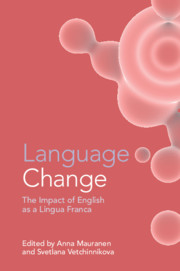Part II - Zooming in on ELF
Published online by Cambridge University Press: 17 December 2020
Summary

- Type
- Chapter
- Information
- Language ChangeThe Impact of English as a Lingua Franca, pp. 175 - 355Publisher: Cambridge University PressPrint publication year: 2020

